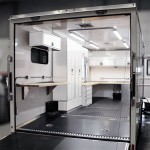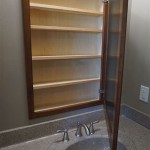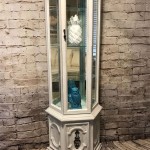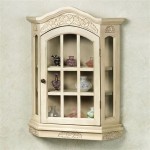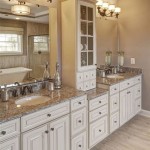How to Remove an Old Recessed Medicine Cabinet
Recessed medicine cabinets, once ubiquitous in residential bathrooms, offer practical hidden storage behind the mirror. Over time, these cabinets can become outdated, damaged, or simply no longer suit the aesthetic of a remodeled bathroom. Removing an old recessed medicine cabinet is a task that, while potentially straightforward, requires careful planning, execution, and attention to detail to avoid damaging the surrounding wall and plumbing or electrical components. This article provides a detailed guide on how to safely and effectively remove an old recessed medicine cabinet.
Preparing for the Removal Process
Before initiating the physical removal of the medicine cabinet, several preparatory steps are crucial to ensure a smooth and safe operation. These steps involve gathering the necessary tools and materials, assessing the cabinet's condition and installation method, and taking precautions to protect the surrounding area.
Gathering Tools and Materials: The following tools and materials are typically required for removing a recessed medicine cabinet:
- Screwdrivers (Phillips and flathead)
- Utility knife
- Pry bar or putty knife
- Level
- Stud finder
- Safety glasses
- Work gloves
- Dust mask or respirator
- Drop cloths or protective sheeting
- Painter's tape
- Reciprocating saw (optional, for stubborn installations)
- Multi-tool with a cutting blade (optional, for cutting through caulk or adhesive)
- Replacement drywall or patching compound
- Sandpaper
- Primer and paint
Assessing the Cabinet’s Condition and Installation: Determining how the cabinet is secured to the wall is paramount. Most recessed medicine cabinets are attached with screws driven into wall studs or drywall anchors. Inspect the interior of the cabinet for visible screw heads along the perimeter. Examine the edges of the cabinet where it meets the wall for evidence of caulk or adhesive. Old caulk can become brittle and may crack easily, but strong adhesives require more effort to detach. Note any areas where the cabinet appears to be tightly bonded to the wall, as these will require careful separation.
Protecting the Surrounding Area: Cover the bathroom floor with drop cloths or protective sheeting to prevent debris and dust from damaging the flooring. Apply painter’s tape around the perimeter of the medicine cabinet where it meets the wall. This will help minimize chipping and peeling of the existing paint when separating the cabinet. Turn off the water supply to any nearby sinks or toilets to avoid accidental water damage. It is also advisable to turn off the electricity to the bathroom if there is a light fixture integrated into the medicine cabinet, or if there are nearby electrical outlets that could be affected.
Removing the Medicine Cabinet
With the preparations complete, the actual removal process can begin. This involves detaching the cabinet from the wall, carefully extracting it from the recess, and addressing any remaining fasteners or adhesive.
Detaching the Cabinet: Start by removing any shelves, mirrors, or other accessories from the cabinet to reduce its weight and facilitate easier handling. Use a screwdriver to remove any visible screws securing the cabinet to the wall. Apply gentle pressure while unscrewing to prevent the screw head from stripping. If screws are stripped or difficult to remove, try using a screw extractor or pliers to grip the screw head. Once all visible screws are removed, use a utility knife to carefully score along the perimeter of the cabinet where it meets the wall. This will help break any caulk or paint that is adhering the cabinet to the wall.
Extracting the Cabinet: Insert a putty knife or thin pry bar between the cabinet and the wall, working along the perimeter. Apply gentle pressure to gradually separate the cabinet from the wall. Avoid using excessive force, as this can damage the surrounding drywall. If the cabinet is heavily caulked or glued, use a multi-tool with a cutting blade to carefully cut through the adhesive. Once the cabinet is loosened, carefully pull it out of the recess. Have a helper assist with this step, especially if the cabinet is large or heavy.
Addressing Remaining Fasteners and Adhesive: After removing the cabinet, inspect the wall for any remaining screws, nails, or adhesive. Remove any remaining fasteners using appropriate tools. Use a scraper or putty knife to carefully remove any residual adhesive from the wall. Be careful not to gouge or damage the drywall during this process. If adhesive residue is particularly stubborn, a citrus-based adhesive remover may be used, following the manufacturer’s instructions carefully.
Repairing and Preparing the Wall
Once the medicine cabinet is removed, the wall will likely require some degree of repair and preparation before it can be repainted or refinished. This involves filling holes, patching damaged areas, and preparing the surface for painting.
Filling Holes and Patching Damaged Areas: Use patching compound or drywall mud to fill any screw holes, nail holes, or other imperfections in the wall. Apply the compound smoothly and evenly, using a putty knife to feather the edges. Allow the compound to dry completely, according to the manufacturer’s instructions. If the wall is significantly damaged, it may be necessary to install a new piece of drywall to cover the area. Cut the drywall to the appropriate size and shape, and secure it to the wall studs with drywall screws. Apply drywall tape to the seams between the new drywall and the existing wall, and then apply a thin coat of drywall compound over the tape. Allow the compound to dry completely.
Sanding and Priming: Once the patching compound is dry, sand the repaired areas smooth using fine-grit sandpaper. Be careful not to over-sand, as this can damage the surrounding drywall. Remove any dust or debris from the wall using a damp cloth. Apply a coat of primer to the repaired areas. Primer helps to seal the surface, ensuring that the paint adheres properly. Allow the primer to dry completely before painting.
Painting or Finishing: Apply two coats of paint to the repaired area, matching the existing wall color. Allow each coat of paint to dry completely before applying the next. If desired, apply a sealant or topcoat to protect the painted surface. Once the paint is dry, remove the painter’s tape and clean up any remaining debris. The wall is now ready to be redecorated or left as is.
Key Points to Consider
Electrical Considerations: If the medicine cabinet is wired with electricity for lighting or a shaver outlet, exercise extreme caution. Shut off the power to the circuit breaker that controls the bathroom. Use a non-contact voltage tester to verify that the power is off. Disconnect the wiring carefully, using wire connectors to cap off any exposed wires. Consult with a qualified electrician if you are unsure about any aspect of electrical work.
Stud Identification: Prior to patching the wall, it is crucial to identify the location of the wall studs. This information is vital for future installations or renovations. Use a stud finder to locate the studs and mark their positions on the wall. This will ensure that anything subsequently mounted on the wall, such as shelves or mirrors, is securely attached to the studs.
Disposal: Responsible disposal of the old medicine cabinet is important. Many components, such as the mirror, glass shelves, and metal frame, can be recycled. Contact your local recycling center to determine the proper disposal methods for these materials. If the cabinet contains hazardous materials, such as mercury-containing light bulbs, dispose of these items according to local regulations.

How To Remove A Medicine Cabinet Kay S Place

How To Remove A Medicine Cabinet Kay S Place

Diy Niche Shelf Old Bathroom Medicine Cabinet Makeover A Piece Of Rainbow

How To Remove A Medicine Cabinet Kay S Place

How To Remove A Medicine Cabinet Kay S Place

How To Remove A Medicine Cabinet Kay S Place

Diy Niche Shelf Old Bathroom Medicine Cabinet Makeover A Piece Of Rainbow

Easily Replace An Old Medicine Cabinet Wg Wood S

How To Remove A Medicine Cabinet Hunker

How To Turn An Old Medicine Cabinet Into Open Shelving My Uncommon Slice Of Suburbia
Related Posts


